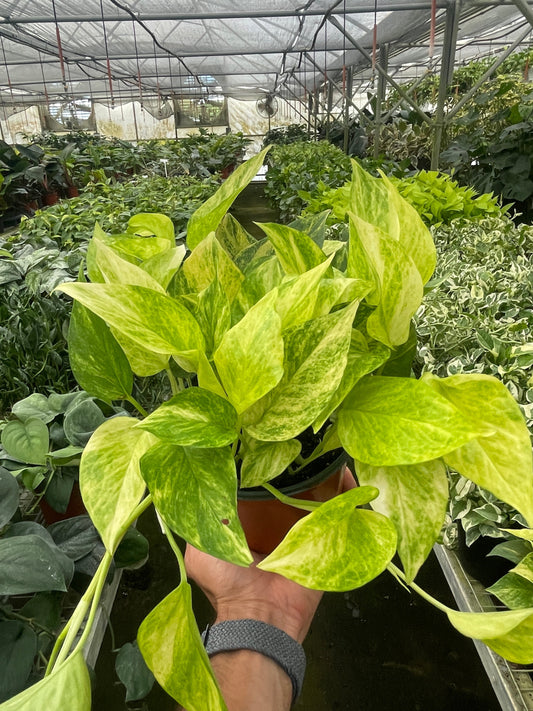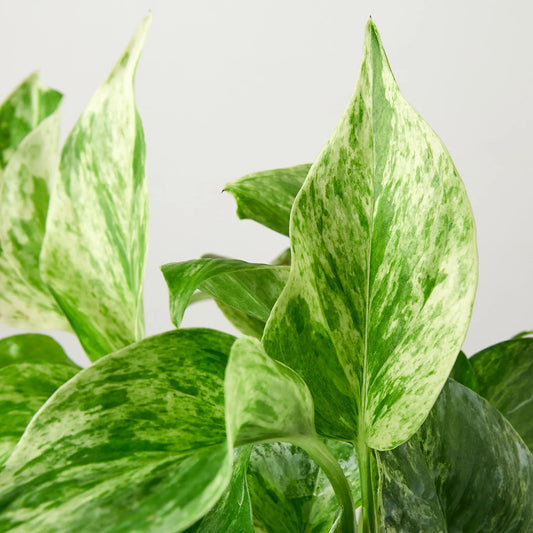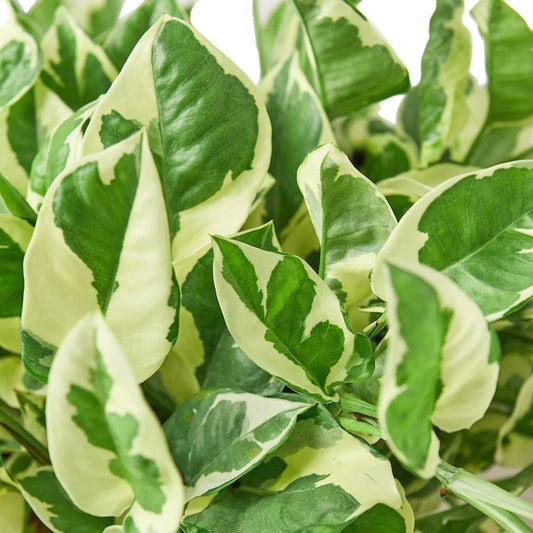Cactus Aerial Roots: Everything You Need to Know
Cafe Planta Team
If you've ever noticed some funky roots popping out from your cactus, you're not alone! These peculiar additions often catch plant people off guard. While they might look a bit strange, cactus aerial roots are a fascinating aspect of plant growth that's worth understanding.
This article is here to explore all things cactus aerial roots. From what they are and why they appear to how to care for them, we'll cover it all. So, sit back, grab a cup of tea, and let's dig into the world of cactus aerial roots.
What Are Cactus Aerial Roots?
Aerial roots are exactly what they sound like: roots that grow above the ground. Unlike the typical roots we see underground, these roots are visible and can seem quite out of place on a cactus. But don't worry, they're completely natural!
These roots form as an adaptation to certain environmental conditions. In the wild, some cacti develop aerial roots to help them cling to surfaces, absorb moisture from the air, or even take in nutrients from decaying plant material. It's a survival tactic that helps them thrive in their native habitats.
You might see aerial roots on various types of cacti, including popular ones like the Christmas cactus or the epiphytic cacti. While they serve useful purposes in nature, their appearance on a houseplant can indicate something about its care and environment.
Why Do Cacti Develop Aerial Roots?
There are several reasons why your cactus might sprout aerial roots. Understanding these reasons can help you determine what your plant needs.
- Humidity: Cacti that naturally grow in humid environments may develop aerial roots to absorb moisture from the air. If your home is particularly humid, this could be why your cactus is growing these roots.
- Lack of Water: A plant might produce aerial roots if it's not getting enough water through its soil roots. The aerial roots can help it absorb moisture from the environment.
- Support: Some cacti, especially climbing varieties, use aerial roots to anchor themselves to other surfaces. This is more common in their natural habitat but can happen indoors if the plant is looking for stability.
- Nutrient Deficiency: Occasionally, a cactus will produce aerial roots if it's lacking nutrients. These roots can help the plant access nutrients that aren't available in the soil.
Recognizing the reason behind your cactus's aerial roots can offer clues to optimizing its care. It's almost like your plant is trying to tell you something!
Should You Be Concerned About Aerial Roots?
Seeing aerial roots on your cactus isn't usually a cause for concern. They're a normal part of plant growth and adaptation. However, they can indicate that your cactus might need some adjustments in its care routine.
If you're seeing aerial roots, it's a good idea to check on a few things:
- Watering Routine: Make sure you're not overwatering or underwatering. Adjust your schedule based on the plant's needs and the season.
- Humidity Levels: Consider if your home is too humid or too dry. A humidifier or dehumidifier might be helpful, depending on your situation.
- Soil Quality: Ensure your cactus is in well-draining soil. A mix specifically for cacti and succulents is ideal.
- Light Exposure: Verify that your cactus is getting the right amount of light. Too much or too little can stress the plant.
While aerial roots themselves aren't harmful, they can be a sign that something in your cactus's environment needs tweaking. Keeping an eye on them can help you keep your plant happy and healthy.
How to Care for a Cactus with Aerial Roots
Once you've identified that your cactus has aerial roots, caring for it isn't too different from your usual routine. However, there are a few extra steps you might consider to ensure your plant stays in tip-top shape.
Adjusting Your Watering Routine
Check your cactus's watering needs. If it's been a while since its last drink, consider giving it some water. However, be careful not to overwater, as this can lead to root rot. The goal is to find a balance that keeps your cactus hydrated without drowning it.
A good rule of thumb is to water only when the top inch of soil is dry. If you're unsure, it's better to err on the side of underwatering, as cacti are more tolerant of drought than excess moisture.
Monitoring Humidity
If your home has high humidity, try moving your cactus to a less humid room. On the flip side, if it's too dry, a gentle misting could do wonders. Alternatively, using a humidity tray or grouping plants together can help maintain a consistent environment.
Providing Adequate Support
For climbing cacti, consider using a trellis or other support to encourage healthy growth. Aerial roots can help the plant latch onto these supports, helping it grow upright and stable.
Ultimately, the key is to observe your cactus and respond to its needs. The aerial roots aren't a problem on their own, but they can be a helpful indicator of what your plant might need.
Can You Trim Aerial Roots?
If the aerial roots on your cactus are becoming unsightly or getting in the way, you might wonder if you can trim them. The short answer is yes, you can trim them back, but it's not necessary for the plant's health.
Before you grab those scissors, consider these points:
- Sanitize Your Tools: Always use clean, sharp scissors or pruning shears to avoid transferring diseases.
- Trim Sparingly: Only remove what's necessary. Cutting too much can stress the plant.
- Monitor Plant Response: After trimming, keep an eye on your cactus to ensure it's adjusting well.
While trimming can help with aesthetics, it's not a solution to the underlying causes of aerial root growth. Addressing those causes is the best way to support your cactus in the long run.
Common Misconceptions About Aerial Roots
There are a few myths floating around about aerial roots that can lead to confusion. Let's clear up some of the most common misunderstandings.
Aerial Roots Indicate Poor Health
Not necessarily! While they can indicate environmental stress, they don't always mean your plant is in dire straits. Sometimes, it's just a natural response to certain conditions.
Aerial Roots Need to Be Removed
As we've mentioned, there's no need to remove aerial roots unless they're causing issues. They're not harming your cactus, and in some cases, they may even be beneficial.
All Cacti Develop Aerial Roots
Not true. While many cacti can develop them, not all will. The likelihood depends on the species and its growing conditions.
Understanding these misconceptions can help you care for your cactus more effectively and alleviate any unnecessary worries.
Creating an Ideal Environment for Cacti
To minimize the chances of your cactus developing aerial roots, aim to create an environment that closely mimics its natural habitat. This means considering factors like light, soil, and water.
Light Requirements
Most cacti love bright, indirect sunlight. A south-facing window is often ideal, but be cautious of direct sunlight, which can scorch the plant. If you're noticing pale or soft growth, your cactus might need more light.
Soil and Potting
Cacti require well-draining soil to prevent waterlogging. A mix designed for cacti and succulents is perfect. Ensure your pot has drainage holes to allow excess water to escape.
Watering Practices
As mentioned earlier, water only when the soil is dry. Overwatering is a common mistake, so it's worth investing in a moisture meter if you're unsure.
By tailoring these elements to your cactus's needs, you can create a thriving environment that reduces stress and the likelihood of aerial roots.
Understanding Different Cactus Types
Not all cacti are the same, and understanding the specific needs of your variety can help in managing aerial roots.
Epiphytic Cacti
These cacti naturally grow on other plants or structures, so aerial roots are a common sight. They thrive in humid conditions and often need more water than desert cacti.
Desert Cacti
These are the classic, drought-tolerant cacti many of us are familiar with. They prefer dry conditions and lots of light, so aerial roots may indicate a need for environmental adjustment.
Knowing which category your cactus falls into can guide your care routine and help you understand its unique needs.
When to Seek Help
If you've tried adjusting your cactus's care and still find it struggling, it might be time to seek some expert advice. Persistent aerial roots, along with other signs of distress, could indicate underlying issues that need professional attention.
- Signs to Watch For: Look for wilting, discoloration, or soft spots in addition to aerial roots.
- Consulting a Specialist: A local plant shop or horticulturist can provide insight into your cactus's health.
It never hurts to ask for help when you're unsure. With a little guidance, you can get your cactus back on track.
Final Thoughts
Cactus aerial roots might seem odd, but they're just another way these amazing plants adapt to their environment. By understanding why they appear and how to care for them, you can ensure your cactus remains healthy and happy.
At Cafe Planta, we love helping plant lovers keep their green friends thriving. Whether you're looking for a new addition to your plant family or need advice, we're here for you. Don't hesitate to email us or reach out on Instagram. Let's connect and grow together!



















